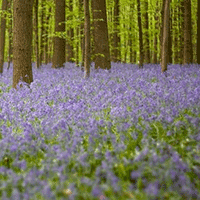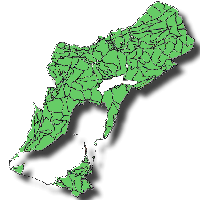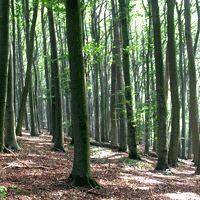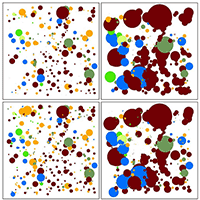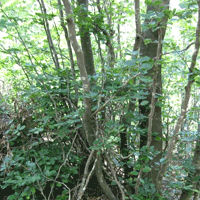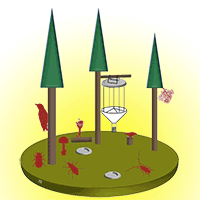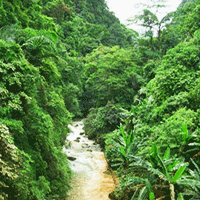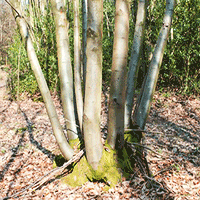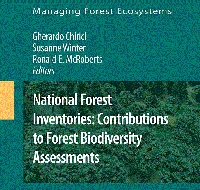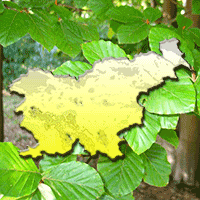
Effects of different silvicultural measures on plant diversity - the case of the Illyrian Fagus sylvatica habitat type (Natura 2000)
Lado Kutnar (1) , Klemen Eler (1-2), Aleksander Marinšek (1-3)
iForest - Biogeosciences and Forestry, Volume 9, Issue 2, Pages 318-324 (2015)
doi: https://doi.org/10.3832/ifor1587-008
Published: Oct 22, 2015 - Copyright © 2015 SISEF
Research Articles
Abstract
In Slovenia, the Natura 2000 network covers more than 37% of the country. Forests dominate more than 70% of this area, and forest management is a significant driver of diversity. Depending on the options applied, forest management may enhance or decrease forest biodiversity. Dinaric fir-beech forests (part of Natura 2000 habitat type) with remarkable nature-conservation interest and timber production functions were selected for this study. With the aim of testing the effects of different silvicultural measures on plant diversity in these forests, and consequently on biodiversity in a broader sense, three sites in the Slovenian part of a Dinaric fir-beech forest range were studied. The plant species diversity was assessed before and after the implementation of silvicultural measures of three intensities: (1) control plots - no logging; (2) logging of 50% of the growing stock; and (3) logging of 100% of the growing stock. Before the implementation of the silvicultural measures, the mean number of plant species per 400 m² vegetation plots was 48.8, and the mean value of the Shannon’s diversity index was 2.41. Two years after the measures were implemented, different magnitudes of plant species turnover were observed. There were no significant changes in plant diversity status and vegetation composition in the control plots. Two years after 50% of the growing stock was logged, the mean number of species was 73.3, and the mean value of the Shannon index was 3.21. In the plots where all the trees were removed, the mean number of species was 87.4, and the mean value of the Shannon index was 3.42. In parallel with the increases in the diversity parameters, the cover of the herbaceous layer increased significantly with an increase in the silvicultural intensity, indicating that short-term species turnover can mostly be attributed to herbaceous plant species. As a result of changed stand and ecological conditions, an increased plant diversity, a greater biodiversity in a broader sense and an improved habitat suitability for different animal species could be expected.
Keywords
Forest Management, Silviculture, Nature Conservation, Plant Diversity, Species Turnover, Gap Colonization, Mountain Forest, Dinaric Fir-beech Forest, Natura 2000
Authors’ Info
Authors’ address
Klemen Eler
Aleksander Marinšek
Slovenian Forestry Institute, Department of Forest Ecology, Večna pot 2, SI-1000 Ljubljana (Slovenia)
Biotechnical Faculty, University of Ljubljana, Jamnikarjeva 101, SI-1000 Ljubljana (Slovenia)
Higher Vocational College for Forestry and Hunting, Ljubljanska 3, SI-6230 Postojna (Slovenia)
Corresponding author
Paper Info
Citation
Kutnar L, Eler K, Marinšek A (2015). Effects of different silvicultural measures on plant diversity - the case of the Illyrian Fagus sylvatica habitat type (Natura 2000). iForest 9: 318-324. - doi: 10.3832/ifor1587-008
Academic Editor
Renzo Motta
Paper history
Received: Feb 04, 2015
Accepted: Jul 08, 2015
First online: Oct 22, 2015
Publication Date: Apr 26, 2016
Publication Time: 3.53 months
Copyright Information
© SISEF - The Italian Society of Silviculture and Forest Ecology 2015
Open Access
This article is distributed under the terms of the Creative Commons Attribution-Non Commercial 4.0 International (https://creativecommons.org/licenses/by-nc/4.0/), which permits unrestricted use, distribution, and reproduction in any medium, provided you give appropriate credit to the original author(s) and the source, provide a link to the Creative Commons license, and indicate if changes were made.
Web Metrics
Breakdown by View Type
Article Usage
Total Article Views: 51382
(from publication date up to now)
Breakdown by View Type
HTML Page Views: 42975
Abstract Page Views: 3045
PDF Downloads: 3963
Citation/Reference Downloads: 22
XML Downloads: 1377
Web Metrics
Days since publication: 3723
Overall contacts: 51382
Avg. contacts per week: 96.61
Citation Metrics
Article Citations
Article citations are based on data periodically collected from the Clarivate Web of Science web site
(last update: Mar 2025)
Total number of cites (since 2016): 20
Average cites per year: 2.00
Publication Metrics
by Dimensions ©
Articles citing this article
List of the papers citing this article based on CrossRef Cited-by.
References
Current practices in solving multiple use issues of Natura 2000 sites: conflict management strategies and participatory approaches. Alterra, Wageningen, the Netherlands, pp. 77.
Gscholar
Council Directive 79/409/ EEC of 2 April 1979 on the conservation of wild birds. Official Journal L 103, European Council, Brussels, Belgium, pp. 1-18.
Gscholar
Assessment of ground vegetation. Manual Part VII.1. In: “ICP Forests. Manual on methods and criteria for harmonized sampling, assessment, monitoring and analysis of the effects of air pollution on forests”. UNECE ICP Forests Programme Co-ordinating Centre, Hamburg, Germany, pp. 19.
Online | Gscholar
Pregled bukovih rastišč v Sloveniji [A review of beech sites in Slovenia]. Zbornik gozdarstva in lesarstva 87: 3-14. [in Slovenian]
Gscholar
Holz-Schätz oder Überschlagung auch Geometrische Einteilung in die Stallungen oder Jährliche Gehausammentlicher Ternovaner Landesfürstlichen Hoch und Schhwartz Waldungen. Manuscript. [in German]
Gscholar
Council Directive 92/ 43/EEC of 21 May 1992 on the conservation of natural habitats and of wild fauna and flora. Official Journal L 206, European Council, Brussels, Belgium, pp. 7-50.
Gscholar
Wirtschaftsplan der Betriebsklasse I.: Göttenitzer Gebirge [Management plan of operation class I.: Göttenitzer Mountains]. Kočevje (Gottschee), Slovenia, pp. 228. [in German]
Gscholar
Stand diversity in the Dinaric fir-beech forests. Zbornik gozdarstva in lesarstva 90: 25-42.
Gscholar
Prediction of forest vegetation shift due to different climate-change scenarios in Slovenia. Šumarski list 135 (3-4): 113-126.
Gscholar
Conservation status and potential threats to Natura 2000 forest habitats in Slovenia. Šumarski list 135 (5-6): 215-231.
Gscholar
Possible Impacts of global warming on forest tree species composition in Slovenia. Catena, Advances in GeoEcology 43: 221-230.
Gscholar
Mala flora Slovenije - Ključ za določanje praprotnic in semenk [Flora of Slovenia - Identification key for ferns and vascular plants]. Tehniška založba Slovenije, Ljubljana, Slovenia, pp. 968. [in Slovenian]
Gscholar
Identifying, managing and monitoring conflicts between forest biodiversity conservation and other human interests in Europe. Forest Policy and Economics 7: 877-890.
CrossRef | Gscholar
Direktiven für die Bestandesaufnahme und die Betriebseinrichtung auf der F.C. Herrschaft Schneeberg [Directives for the inventory and operating equipment at the Schneeberg FC government]. Kleinmayr-Bamberg, Germany and Ljubljana, Slovenia. [in German]
Gscholar
Flora Europaea, Vol. 2-5. Cambridge University Press, Cambridge, MA, USA, pp. 455, 370, 523, 467.
Gscholar
Flora Europaea, Vol. 1 - Psilotaceae to Platanaceae (2nd edn). Cambridge University Press, Cambridge, MA, USA, pp. 581.
Gscholar

